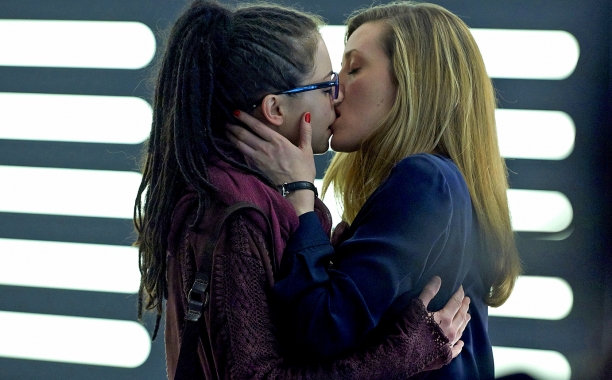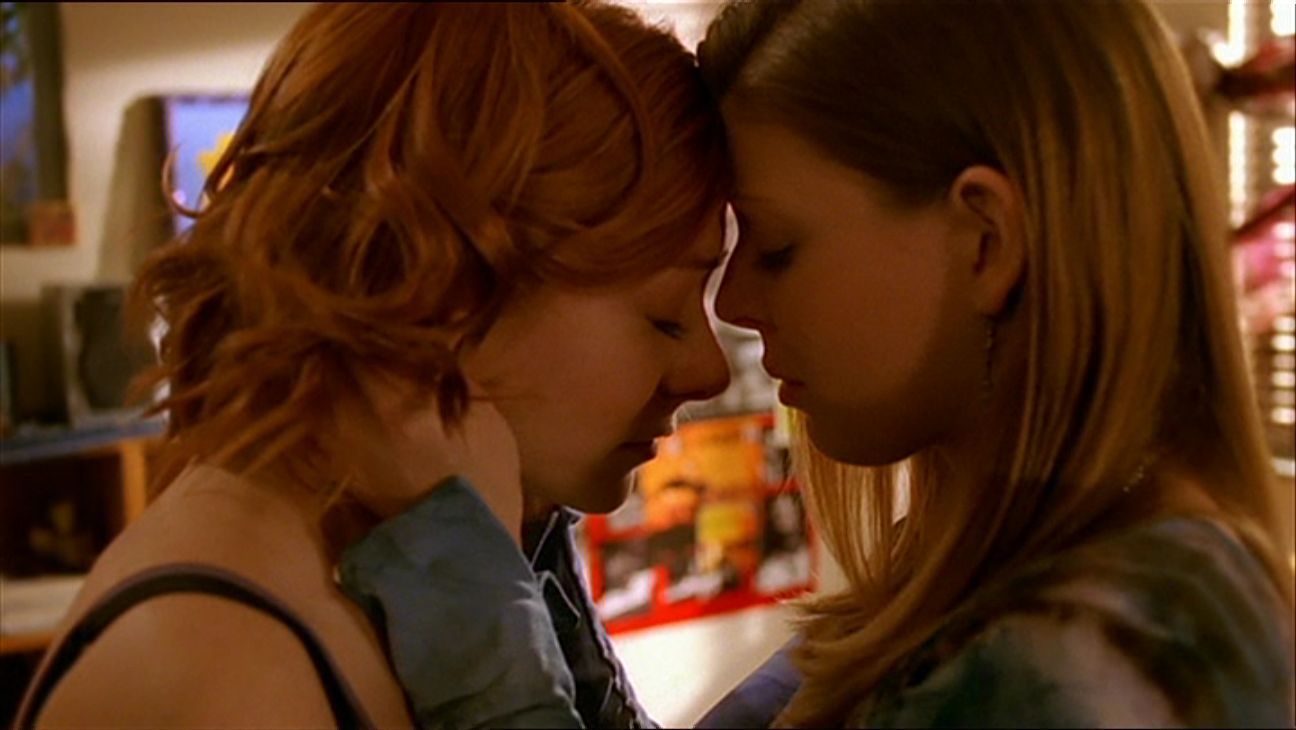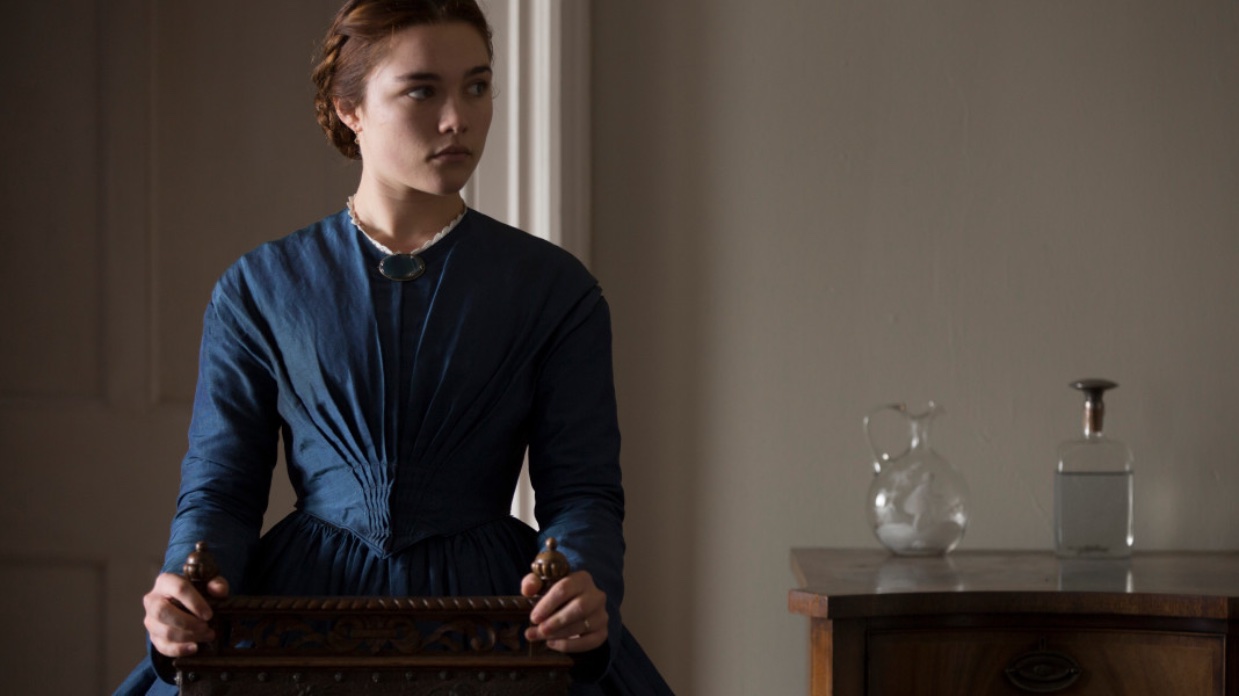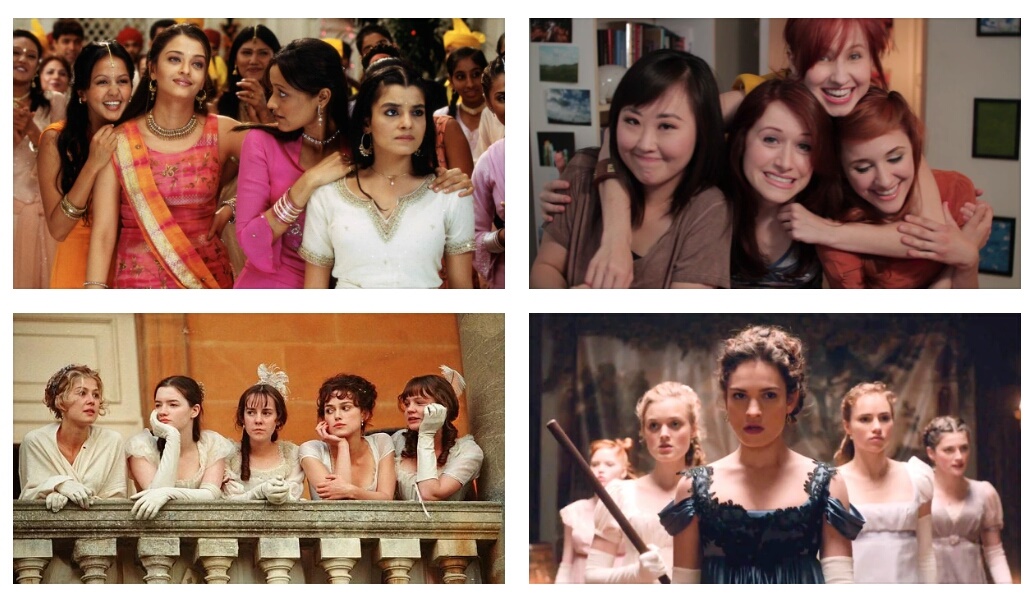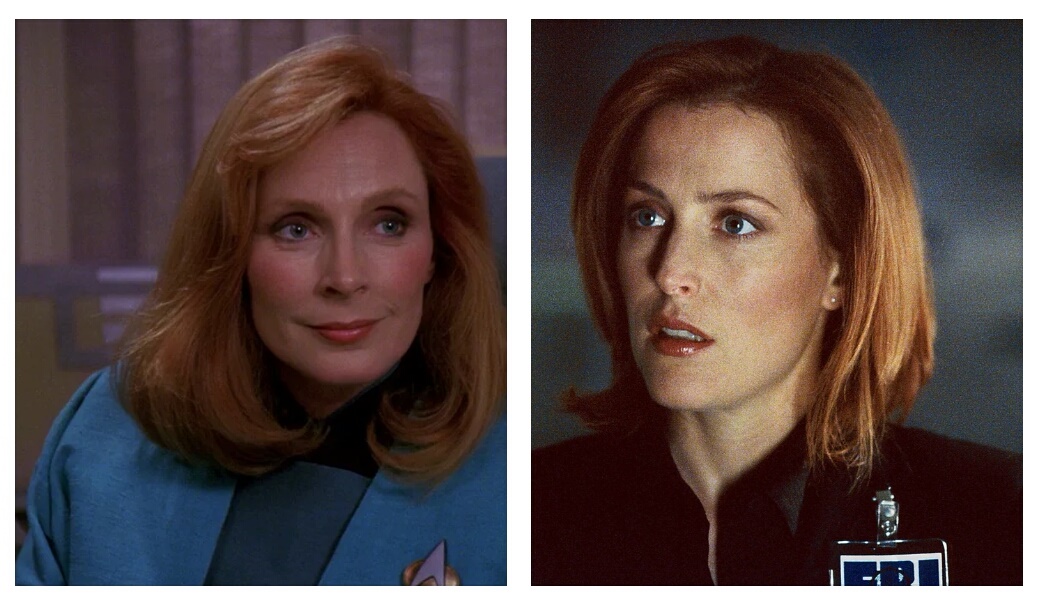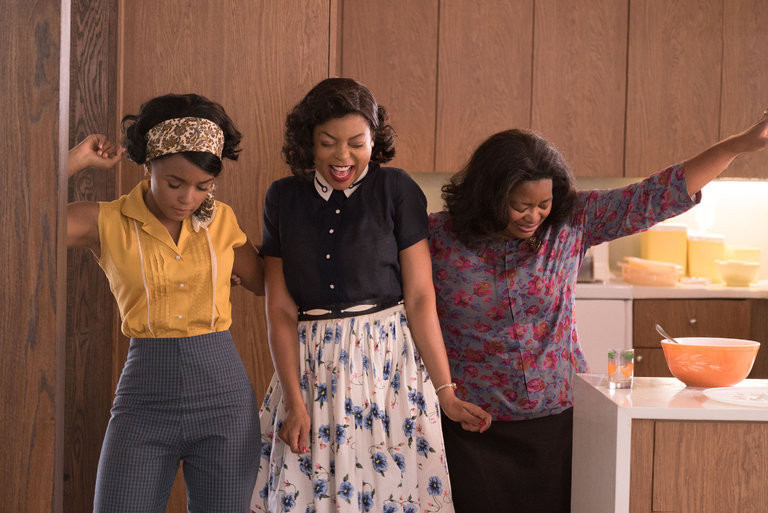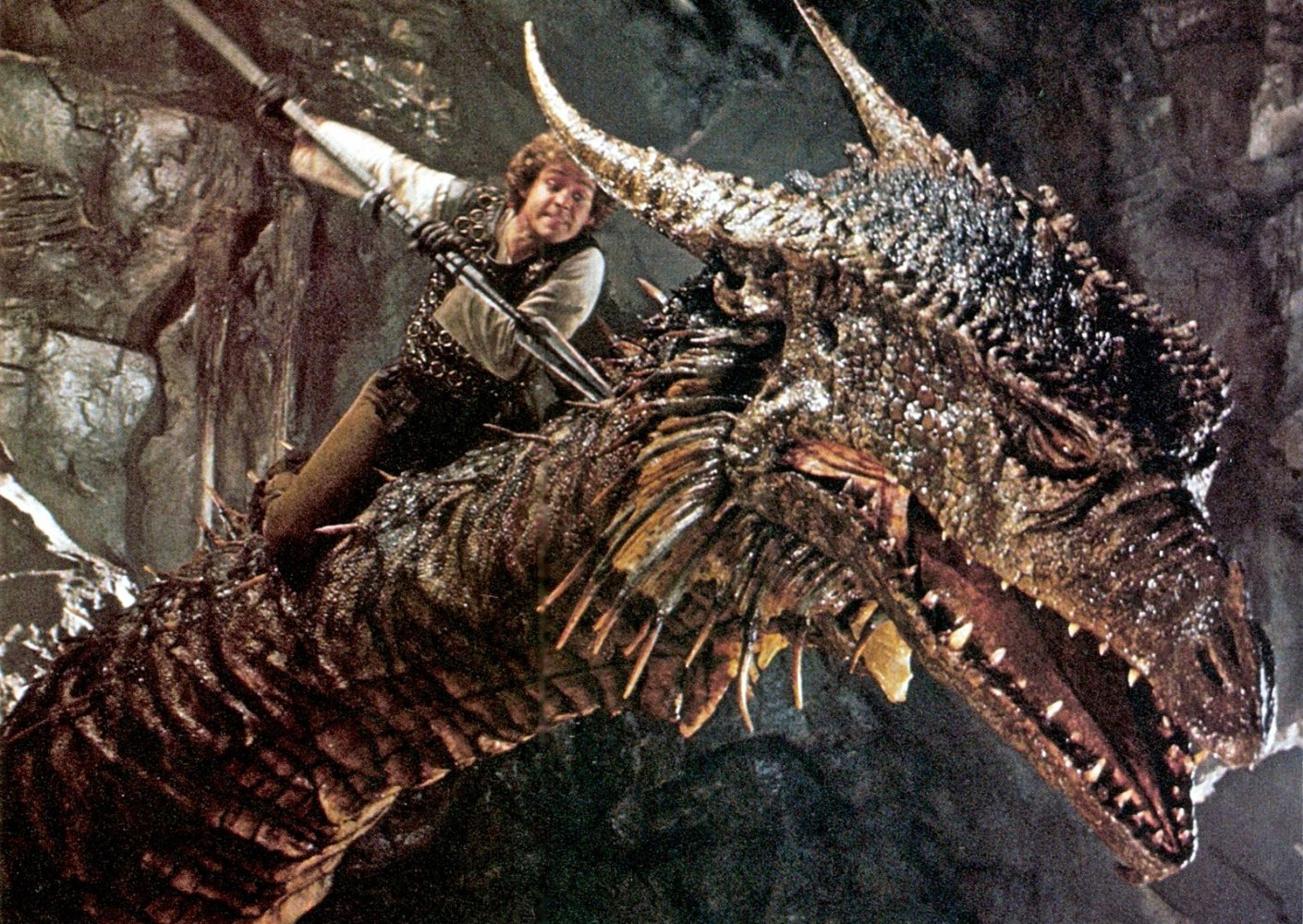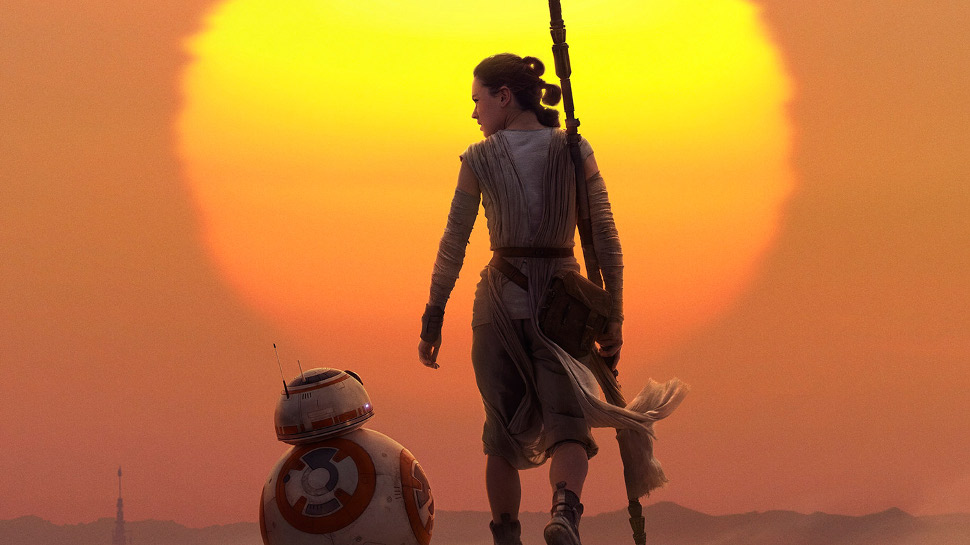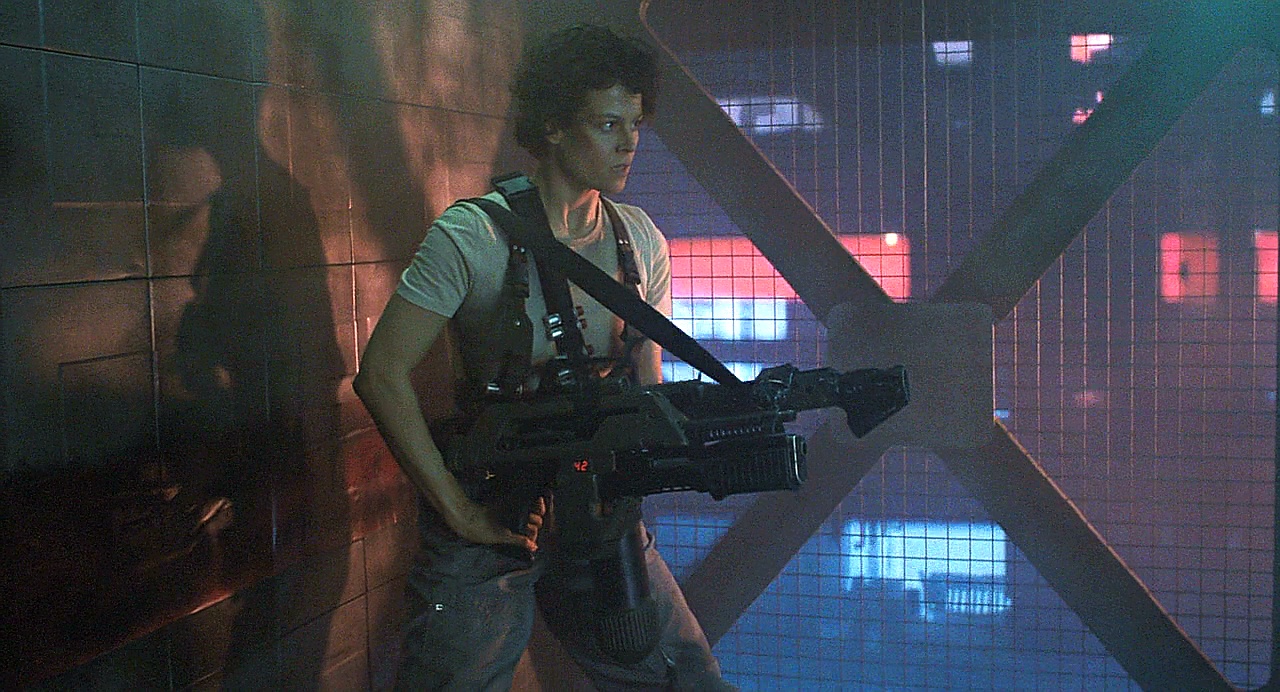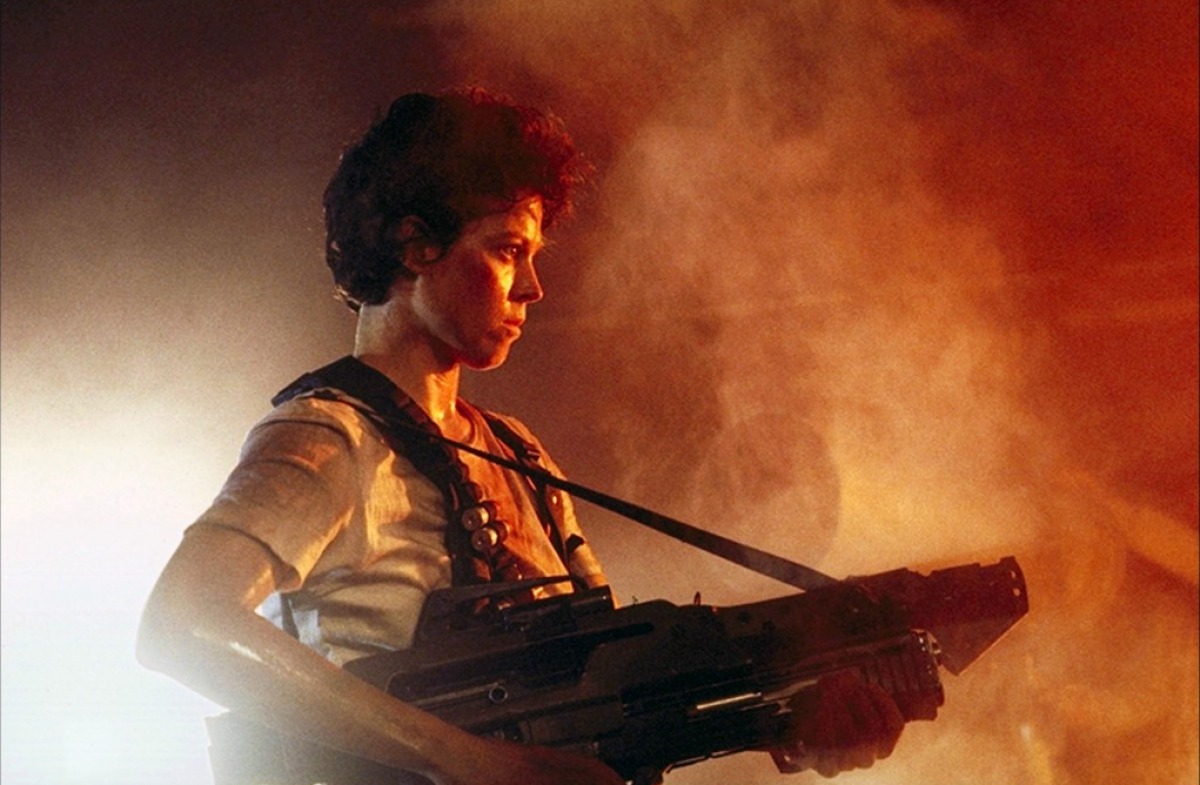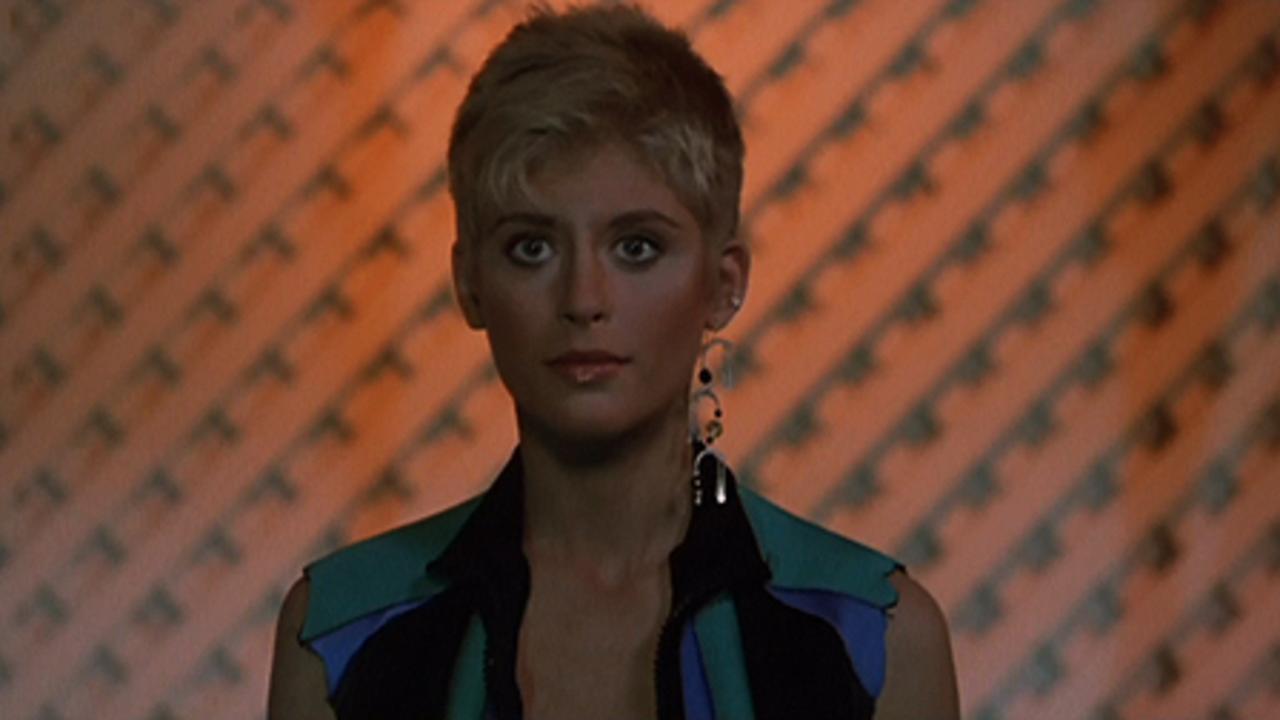
This guest post written by Tara Betts appears as part of our theme week on Women Scientists.
In movies and on television, the absence of Black women as scientists is glaringly obvious. This became more obvious when the 2016 Ghostbusters reboot caused an outcry around Leslie Jones — the only Black Ghostbuster — being cast as a municipal worker, rather than a scientist like her white women costars. Even though Jones’ occupation is identical to Ernie Hudson’s role as Winston in the 1984 original, the response on social media to the vocation of Jones’ character offers an opportunity to ponder: When have Black women been cast as scientists in laboratories, creating and inventing significant and outlandish developments, and leading investigations? Black women have been stereotypically cast as servants and sex workers in too many films to name here, but we should be asking: Where are the Black women playing scientists in films in the 21st century?

Some of the smaller, less central scientist roles played by Black actresses include Kerry Washington as Medical Officer Marissa Brau in 30,000 Leagues Under the Sea (2007), Alfre Woodard as Lily Sloane as Zefram Cochrane’s (played by James Cromwell) assistant in Star Trek: First Contact (1996), N’Bushe Wright as hematologist Dr. Karen Jenson in Blade (1998), and Dr. Billie Worth (Rosalind Cash) seeking the cure to cirrhosis with Dr. Henry Pride (Bernie Casey) in Dr. Black, Mr. Hyde, the 1976 blaxploitation version of Robert Louis Stevenson’s Dr. Jekyll and Mr. Hyde. Most recently, Viola Davis seems to have cornered the most roles as a Black female scientist. Davis played Dr. Helen Gordon in Solaris (2002) and as Major Gwen Anderson, a psychologist in Enders Game (2013). Davis also plays Amanda Waller in the recently completed Suicide Squad movie. Angela Bassett portrayed the same role in Green Lantern (2011) but this version of the character was a scientist, rather than a government official.
The upcoming 2017 Hidden Figures (starring Taraji P. Henson, Janelle Monáe, Octavia Spencer), Sanaa Lathan in the 2004 film AVP: Alien vs. Predator, and Janet Jackson in the 2000 comedy The Nutty Professor II: The Klumps approach representations of Black women as scientists in ways that have yet to be replicated more often. But there is also room for more believable portrayals across STEM-related disciplines. These roles are some of the only leading roles where Black women scientists received top billing, rather than as supporting characters who assist other scientists.
In AVP: Alien vs. Predator, Lathan portrays Alexa Woods, an environmental technician and expedition leader for a group of archaeologists, which makes her more than a scientist. She leads her fellow scientists and eventually prevails against two nearly unstoppable adversaries. Throughout this film, Alexa is a quick-thinking, resourceful heroine in escalating crises. Her final challenge lies in preventing any aliens from rising to Earth’s surface. Otherwise, the Predators and humans know that life on the planet will be completely destroyed.

Alexa’s first scene displays her endurance as she climbs the Lho La icefall in Nepal. In the middle of ascent, her ringing cell phone startles her, but she calmly and quickly secures herself in order to answer the call via the ear piece tucked beneath her cap. She, along with a team of experts, is flown in directly from the mountaintop via helicopter to meet with Charles Bishop Weyland (Lance Henriksen) to hear a description of the mission. Weyland’s satellites have discovered an unusual heat signature in Antarctica, and thermal imaging reveals a massive structure with hundreds of rooms built around a central core beneath the edifice. The pyramid itself displays characteristics from structures from Aztec, Cambodian, and Egyptian structures. Woods’ doubt about the safety of the mission leads her to turn it down. But Sebastian de Rosa (Raoul Bova) and Graeme Miller (Ewen Bremner) convince her to take the mission by asking if they have a better chance of surviving with her. The lack of experience of other scientists in her hazardous field and de Rosa’s gentle request convinces Alexa that she can work toward keeping the crew safe. Inevitably, Alexa is the only expert who can take on the mission with Weyland Industries to find what may be the earliest pyramid, 2,000 feet below Bogataya Island.
The team arrives at the abandoned whaling station on the Antarctic island. They discover that some sort of advanced thermal equipment has cut a perfectly angled tunnel straight toward the pyramid just before their arrival. As they begin to descend into the tunnel, Weyland loses his grip and starts plummeting toward a possible collision with the rocks and pyramid below. Alexa clearly notes his sliding body and lowers an ice hatchet onto the loose, unused hood of Weyland’s parka. In doing so, she saves the wealthy initiator of the project who, at times, sounds like a fatherly/great white benefactor standing in for Alexa’s late father, who died from complications related to a mountain climbing injury.
After losing Sebastian, the last member of her team who helped her figure out some of the written hieroglyphs, Alexa undergoes a significant hunting ritual of the Predators. She surrenders one of the artifacts, approaches a surviving Predator peacefully, and kills one of the aliens. This unlikely alliance places a Black woman in a role that is nearly nonexistent in U.S. cinema: a leader who survives an animal-like alien onslaught and a technologically-advanced hunter who could easily eliminate human life. Lathan could have reprised her role as Alexa Woods in the 2007 sequel Alien vs. Predator: Requiem or in other films, much like Sigourney Weaver as Ripley in the Alien franchise. But that opportunity never arose.

Before the release of the suspense-filled sci-fi action film AVP: Alien Versus Predator, Eddie Murphy starred as the lead in the 1996 remake of The Nutty Professor, which was originally a Jerry Lewis film made in 1963. Unlike the chemistry student Carla Purty (Jada Pinkett Smith) in Murphy’s first Nutty Professor, Denise Gaines (Janet Jackson) is Sherman Klump’s colleague in the sequel The Nutty Professor II: The Klumps. In her opening scene, Jackson dons wire-framed glasses and a blazer. Throughout the entire film, Jackson is covered in long sleeves and long skirts, like a modest academic who would rather downplay her physical attributes and draw attention to her intellect. Sherman wedges his way into a crowded lecture to listen to Denise explain her research as she points to an overhead projection featuring illustrations of DNA chains. Her research is related to a potential process for genomic extraction. An extraction such as this would remove risk factors from an individual’s DNA in order to prevent genetic health problems in the future.
In the next scene, Denise enters Sherman’s lab to pull him aside and talk to him one on one. As they walk under wide collegiate arches together, Denise tells him that she’s been invited to take a position at University of Maine, but she’s not sure if she wants to take it since she wants to stay because of her feelings for Sherman. In some ways, this reflects the difficulty that women faculty, including women of color STEM faculty often face, the challenge of finding a spouse. “Sherman, I’m not talking about research. Sherman, you’re very special to me. You are kind and decent. You are the most brilliant man I’ve ever known.” When Gaines says this and disregards Sherman’s size, the implication is that she loves him, not some conventionally attractive appearance he could have. Gaines’ perception of Sherman is reinforced after an outburst from Buddy Love, his bullying, overtly macho Jekyll-like, alter-ego. When Sherman proposes to Denise, he impresses her by writing/spraying “Marry Me” in the sky with a simulated hormone. It is his decency and intellectual prowess that leads to Denise accepting his proposal. They celebrate this happy moment after class in a lecture hall while they sip champagne out of beakers, and Chaka Khan’s “Tell Me Something Good” plays in the background. Their giggles and sips are followed by a major professional success when the boss of both Sherman and Denise, Dean Richmond (Larry Miller), notifies them that their research led to receiving a multi-million-dollar research grant from a fictional pharmaceutical company.
Although Denise is Sherman’s peer, not just his fiancée, her role is downplayed to emphasize the scenes where she participates in wedding festivities for her plans, including dinner with both sets of parents, trying on Sherman’s mother’s wedding dress, picking up an altered dress, and attending a bachelorette party complete with a fireman stripper dancing to Sisqo’s “Thong Song.”
Although there are some thoughtful moments that portray masculinity as a scholarly, sensitive man like Sherman Klump or his loving father Cletus, who can be tender with the wife he desperately wants to please, they are caricatures of Black people that stereotype plus-size people and older Black women by Murphy dressing in drag. When he plays Mama Klump and the hyper-sexual Granny Klump, the humor resides in creating a plus-size, undersexed mother and a representation of an older, lascivious Black woman with oversized, flapping breasts and bad dental health. This reliance on Granny Klump’s appetites as an ageist source of humor makes the sexuality of older women look absurd and completely undesirable. The women in the film (who aren’t Murphy in drag) are Denise, a couple of women that Sherman briefly greets on campus, and a few women of various ages in a club where Cletus tests out Sherman’s youth formula during a night out. In fact, Sherman’s nephew Ernie Klump, Jr. (played by Jamal Mixon) is the only person in the Klump family who is actually plus-size, and he has the least to say in the film. When he does speak, it is often to punctuate a moment of comic relief.
Aside from these shallow sizeist and stereotypical portrayals of Black people (especially Black women and Black families), one of the underlying messages is that a good woman can help save you. After convincing Dean Richmond that he can fix his declining intelligence and secure the pharmaceutical contract, Sherman takes a small amount of the youth formula and checks his computer to check the details of his rapidly progressing brain damage, which will only be reversed by ingesting some of the genetic material of Buddy Love. This isn’t necessarily consistent with science, but it offers a simple plot point.
After Dean Richmond and Sherman hurriedly leave to capture Buddy Love, Denise enters the laboratory to leave a note for Sherman. She understands the life-altering results of the file that Sherman carelessly left open. The details of the file reveal the genetic extraction that Sherman performed on himself without telling her, and she follows them to save Sherman. When she finds Sherman, he is barely able to speak, and they discover that some of Buddy Love’s genetic material has been absorbed into a water fountain. Denise forces Sherman to drink from it to restore his deteriorating intelligence. Even though she has access to the laboratory and she understands the file, Denise’s intellectual and scientific talents are primarily showcased in that first classroom scene where she is teaching, not necessarily in applied sciences, like Sherman.

Lastly, in Margot Lee Shetterly’s upcoming book Hidden Figures: The American Dream and the Untold Story of the Black Women Mathematicians Who Helped Win the Space Race (William Morrow, 2016), she focuses on the “women computers” of the Langley Research Center, of what would become NASA, who performed calculations that led to John Glenn’s walk on the moon. These women included Katherine G. Johnson, Mary Jackson, Dorothy Vaughan, Kathryn Peddrew, Sue Wilder, Eunice Smith, and Barbara Holley. In 2014, two years before the book’s publication, the book rights were sold and plans to launch the new film Hidden Figures began.
As more Black women assume the roles of scientists in major motion pictures, a better job can be done to make them instrumental, rather than ancillary, to the plots of such films.
See also at Bitch Flicks: 5 Women Scientists Who Need Their Own Movie ASAP
Tara Betts is the author of two full-length poetry collections Break the Habit and Arc & Hue. She is also the author of the chapbooks 7 x 7: kwansabas (Backbone Press, 2015), the upcoming Never Been Lois Lane (dancing girl press, 2016), and the libretto THE GREATEST!: An Homage to Muhammad Ali (Argus House/Winged City Press, 2013). Tara’s writing has appeared in The Source, XXL, Black Radio Exclusive, Essence, NYLON, and the blog for Ploughshares.
